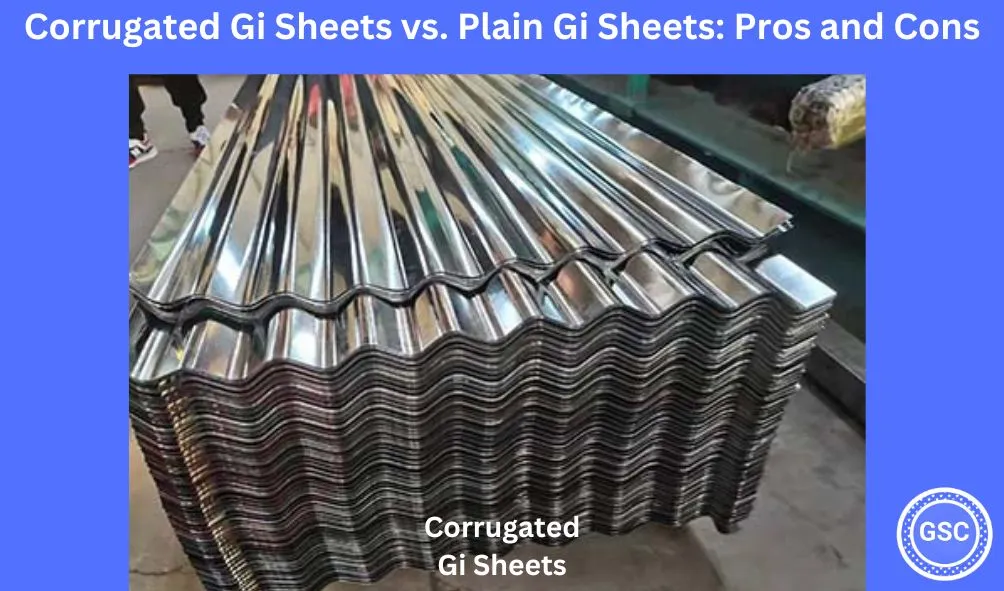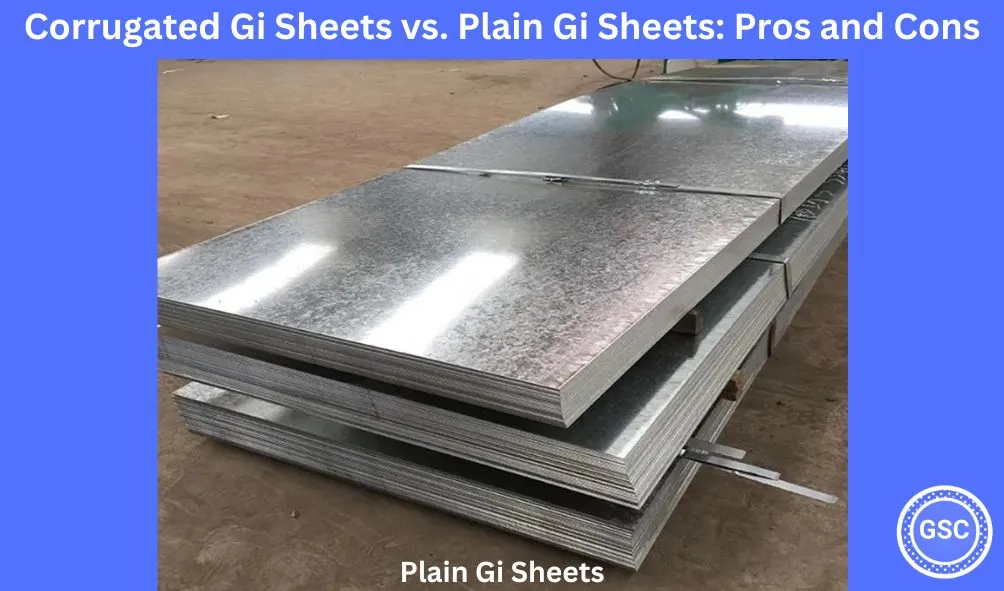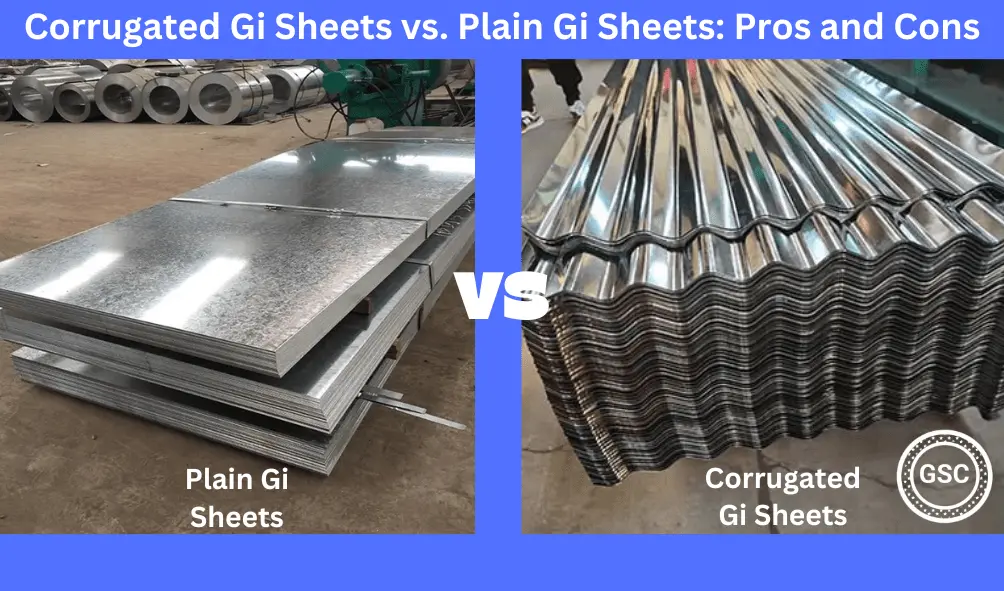As a construction enthusiast with years of experience, I’ve witnessed firsthand the critical decisions builders and architects face when it comes to choosing the right materials for a project. One such decision often involves selecting between corrugated Gi sheets and plain galvanized sheets.
Each type has its own set of advantages and disadvantages, and the choice can significantly impact the outcome of a construction project.
In this article, I’ll explore the pros and cons of both corrugated Gi roofing sheets and plain Gi sheets to help you make an informed decision for your next endeavor.
Table of Contents
Corrugated Gi Roofing Sheets: The Wavy Marvels

Corrugated galvanized sheets, with their distinctive wavy pattern, are a common sight in the construction industry. These sheets have been popular for decades due to their unique characteristics.
Pros of Corrugated Gi Roofing Sheets
1.Strength and Rigidity: Corrugated galvanized sheets are known for their impressive strength and rigidity. The wave-like structure adds to their load-bearing capacity, making them ideal for roofing and wall applications.
2.Water Drainage: The corrugations play a crucial role in facilitating efficient water drainage, making these sheets suitable for areas with heavy rainfall or snowfall.
3.Aesthetics: The distinctive pattern of corrugated sheets adds an aesthetically pleasing element to the building. They can be used to achieve a rustic or industrial look.
4.Less Material Needed: Due to their rigidity, corrugated sheets require less supporting framework, which can result in cost savings.
5.Insulation: These sheets can be used to create insulated roofing systems, contributing to energy efficiency and reducing heating and cooling costs.
Cons of Corrugated Gi Roofing Sheets
1.Cost: Corrugated Gi sheets are often more expensive than plain Gi sheets. However, their durability can offset this initial cost difference over time.
2.Installation Complexity: Installing corrugated sheets can be more complex due to the need for precise alignment and sealing at the overlaps.
3.Noise: Rain or hail can be noisier on corrugated Gi sheets compared to the smoother surface of plain Gi sheets.
Plain Gi Sheets: The Simplicity of Strength

Plain galvanized sheets, as the name suggests, have a smoother surface without the characteristic corrugations. While they may seem simpler, they come with their own set of advantages and disadvantages.
Pros of Plain Gi Sheets
1.Cost-Effective: Plain Gi roofing sheets are often more budget-friendly compared to their corrugated counterparts. This can be a significant factor for cost-sensitive projects.
2.Simpler Installation: Due to their flat surface, plain Gi roofing sheets are easier to install, and they require fewer attachments.
3.Versatility: These sheets are versatile and can be used in a wide range of applications, from roofing to cladding and beyond.
4.Sleek Appearance: The smooth surface of plain galvanized sheets provides a modern and sleek appearance, making them suitable for contemporary architectural designs.
Cons of Plain Gi Sheets
1.Limited Drainage: Without the corrugations, plain Gi roofing sheets may not drain water as efficiently, potentially leading to water accumulation on the surface.
2.Reduced Strength: While still strong, plain Gi roofing sheets may not have the same load-bearing capacity as corrugated sheets, which can be a consideration for heavy roofing loads.
3.Aesthetic Limitations: The lack of corrugations means that plain Gi roofing sheets might not be the best choice if you’re looking for a specific textured or industrial appearance.
Choosing the Right Gi Sheets for Your Project
The choice between corrugated Gi sheets and plain Gi sheets ultimately depends on the specific requirements of your construction project. Here are some factors to consider:
1.Budget: If cost is a primary concern, plain galvanized sheets might be the more suitable choice.

2.Aesthetics: Consider the desired appearance of your building. If you’re aiming for an industrial or rustic look, corrugated galvanized sheets could be the way to go.
3.Functionality: Think about the purpose of the Gi sheets. If you require strong water drainage, corrugated sheets are better equipped for this.
4.Installation Complexity: Assess the expertise of your installation team. If simplicity and speed are essential, plain galvanized sheets may be preferred.
5.Location and Climate: The local climate plays a significant role. For areas with heavy rain or snow, corrugated sheets are a practical choice.
In Conclusion
Both corrugated Gi sheets and plain Gi sheets have their unique strengths and weaknesses. The choice between the two should align with the specific needs of your construction project, as well as your budget constraints and aesthetic preferences.
Whichever type you choose, you can be confident that galvanized sheets, with their durability and corrosion resistance, will contribute to the longevity and strength of your building. Making an informed decision ensures that your project will stand strong and proud for years to come.


